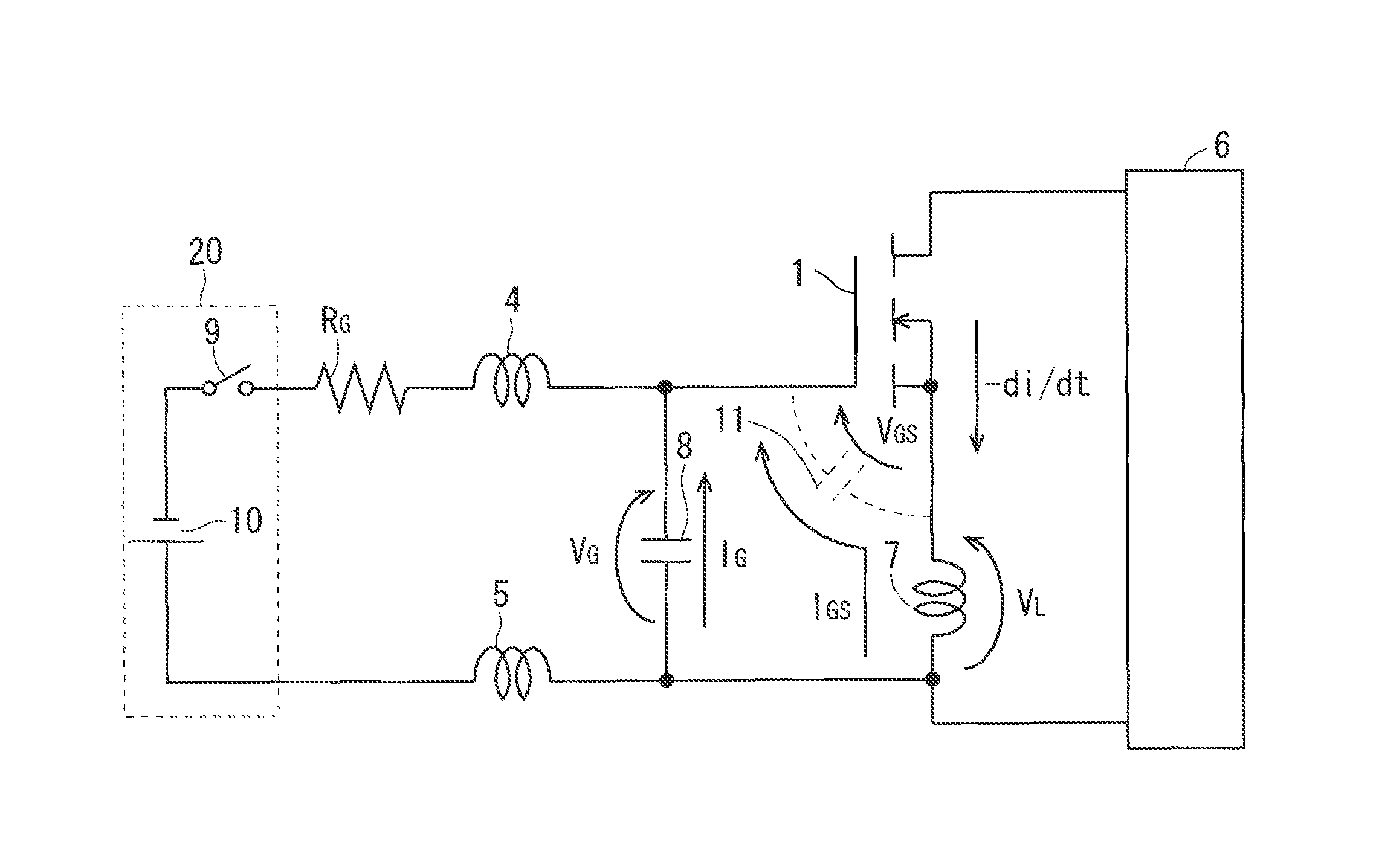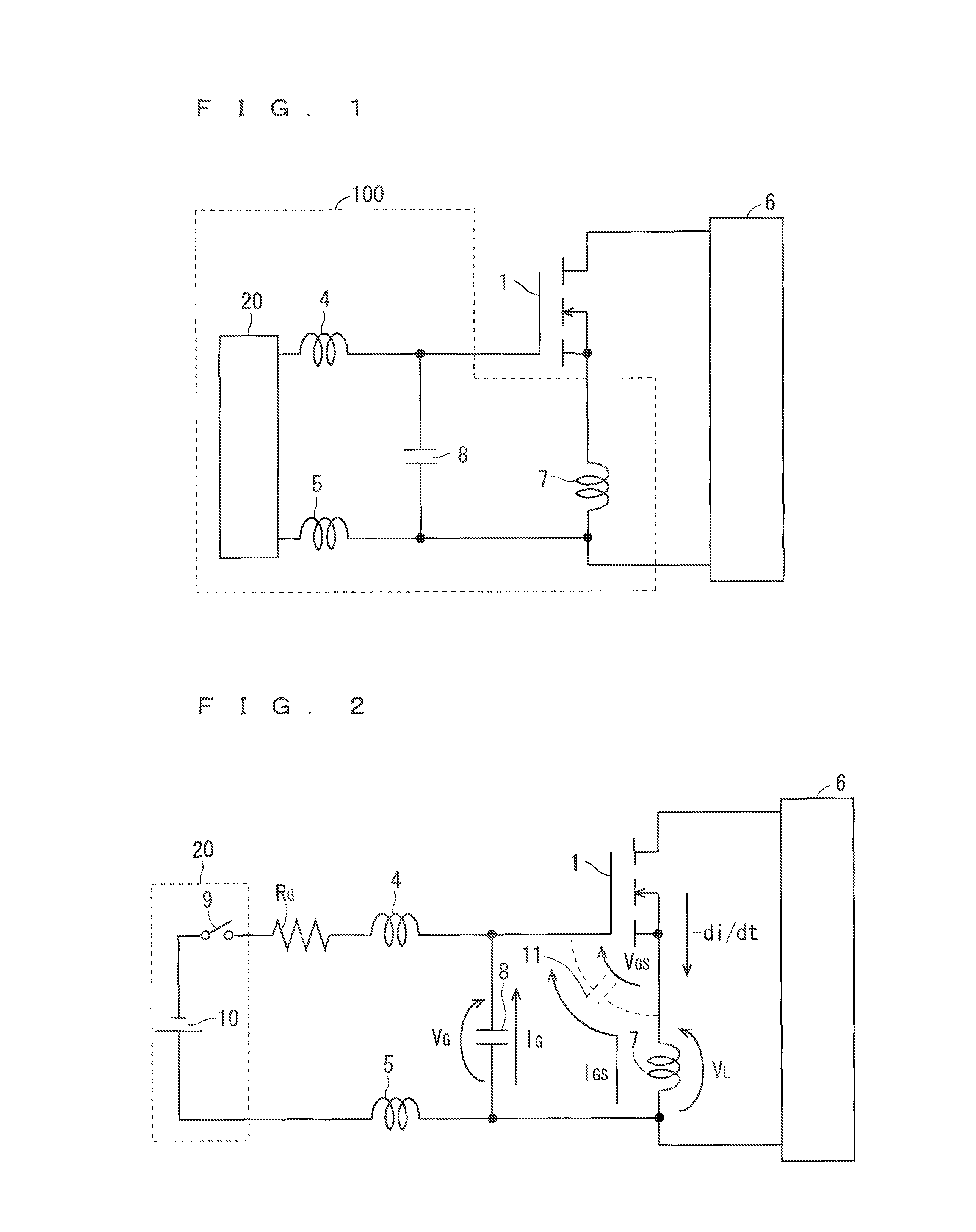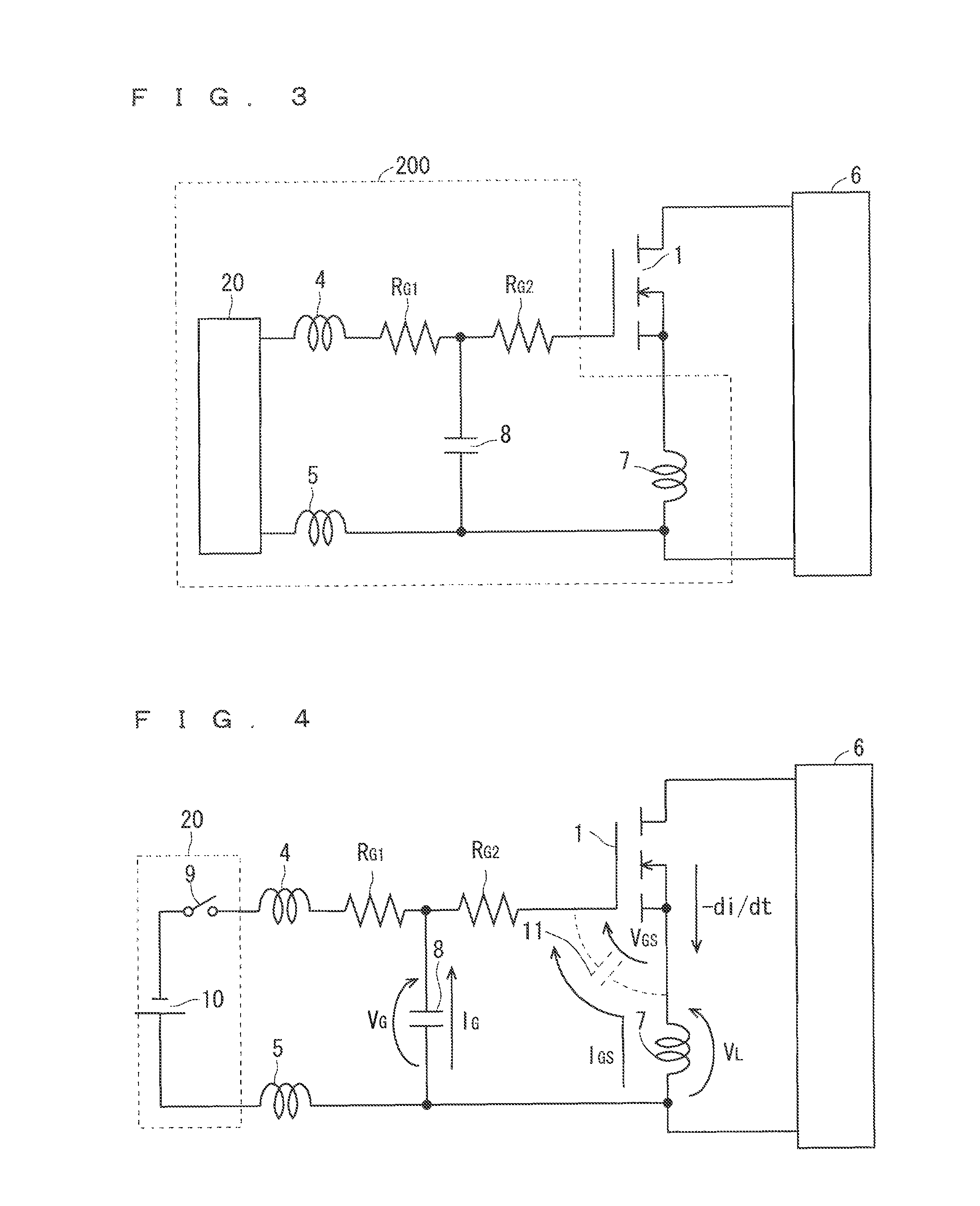Driving circuit and semiconductor device
a driving circuit and semiconductor technology, applied in the direction of pulse generators, electronic switching, pulse techniques, etc., can solve the problems of insufficient simple methods, difficult to reduce stray inductance, and heat dissipation capacity constraints, so as to reduce di/dt and achieve the effect of reducing the effect of other operations and minimal
- Summary
- Abstract
- Description
- Claims
- Application Information
AI Technical Summary
Benefits of technology
Problems solved by technology
Method used
Image
Examples
first preferred embodiment
Configuration
[0030]FIG. 1 shows a configuration of a driving circuit 100 in the present preferred embodiment. The driving circuit 100 drives a switching element 1 connected to a main current circuit 6. In the present preferred embodiment, the switching element 1 is, for example, a MOSFET.
[0031]The driving circuit 100 includes a driving portion 20 applying voltage to a gate of the switching element 1 for turning on / off the switching element 1. The driving circuit 100 further includes a common inductor 7 and a capacitor 8. The common inductor 7 is disposed in an interconnection part commonly connected to the driving circuit 100 and a source side of the switching element 1 in a loop formed of the main current circuit 6 and the switching element 1. The capacitor 8 is connected between the gate side and the source side of the switching element 1 on the driving portion 20 side with respect to the common inductor 7.
[0032]Driving inductances 4 and 5 are self-inductances of an interconnectio...
second preferred embodiment
Configuration
[0049]FIG. 3 shows a configuration of a driving circuit 200 in the present preferred embodiment. In the present preferred embodiment, a plurality of driving current limiting portions connected in series are provided on a gate side of a switching element 1. As shown in FIG. 2, the driving current limiting portions are, for example, gate resistances RG1 and RG2. An end of a capacitor 8 is connected between the gate resistances RG1 and RG2.
[0050]
[0051]A negative feedback voltage corresponding to driving inductances 4 and 5 is 1.6 V similarly to the first preferred embodiment. On the other hand, to make a discharging current of an input capacitance 11 one-fifth thereof, the voltage applied to the gate resistance RG2 is made one-fifth. The necessary negative feedback voltage corresponding to the gate resistance is 12 [V]×RG2 / (RG2+RG1)=12 [V]×1 / (1+RG1 / RG2), and the ratio of the gate resistance RG1 to the gate resistance RG2 can adjust the amount of the negative feedback. Sinc...
third preferred embodiment
Configuration
[0059]FIG. 6 shows a configuration of a driving circuit 300 in the present preferred embodiment. In the present preferred embodiment, two switching elements 1a and 1b (MOSFETs) are connected in parallel to a main current circuit 6.
[0060]Similar to the first preferred embodiment, common inductors 7a and 7b are provided on a source side of the switching elements 1a and 1b, respectively. A capacitor 8a is connected between the gate side and the source side of the switching element 1a on the side closer to a driving portion 20 than the common inductor 7a with respect to the switching element 1a. Similarly, a capacitor 8b is connected between the gate side and the source side of the switching element 1b on the side closer to the driving portion 20 than the common inductor 7b with respect to the switching element 1b. An interconnection has the driving inductances 4 and 5.
[0061]
[0062]In a case where the switching element 1a switches faster than the switching element 1b, the sw...
PUM
 Login to View More
Login to View More Abstract
Description
Claims
Application Information
 Login to View More
Login to View More - R&D
- Intellectual Property
- Life Sciences
- Materials
- Tech Scout
- Unparalleled Data Quality
- Higher Quality Content
- 60% Fewer Hallucinations
Browse by: Latest US Patents, China's latest patents, Technical Efficacy Thesaurus, Application Domain, Technology Topic, Popular Technical Reports.
© 2025 PatSnap. All rights reserved.Legal|Privacy policy|Modern Slavery Act Transparency Statement|Sitemap|About US| Contact US: help@patsnap.com



